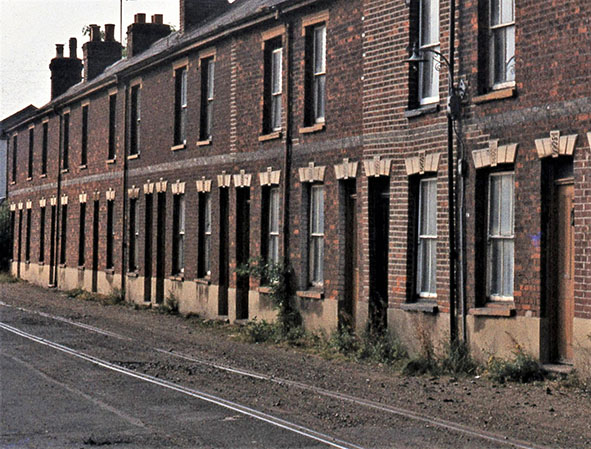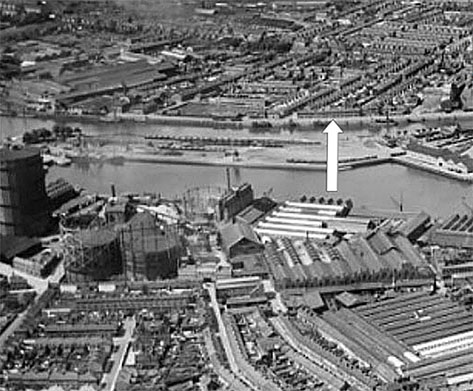- Screen Colours:
- Normal
- Black & Yellow

Cover image: ‘Further to the item in the January newsletter about (lack of) access to public open space near the railway at Griffin Wharf, the photo further along the same rail track and next to the New Cut, may be of interest. It shows a more relaxed approach to railway safety in the past. Residents just needed to be careful when opening the front door! The photo was taken in 1981 and the houses were demolished shortly afterwards. Regards, David Sparkes.’ (See also the aerial view below.)
Editorial
The article on page 21 relating to the empty Carr Street Co-op stores sprang from a plea from a new member which recognised the importance of the series of facades going east from Cox Lane – not to mention the Harvest mural towards the rear. The original Co-op building on the west side of the lane has, of course, been recently converted into accommodation. The plea was that the Society would let our membership know about an online petition opposing demolition of the site to build a new school. John’s article catches us all up with the current state of play on this important site in Ipswich.
The Liverpool Street Station ‘modernisation’ proposals (page 22 and back cover) are starting to provoke negative critiques. On 3 February the BBC Radio 4 Today programme featured a lengthy interview with Griff Rhys Jones, President of the Victorian Society and President of Civic Voice. He described the scheme, which claims to leave the Victorian station and hotel ‘untouched’ as commercial opportunism which could set a dangerous precedent for other heritage buildings. His view is that the plan involves building a platform over the top of the station and putting a tower block on top of it. The controversy continues.
A cynic might draw a parallel with the proposal, once mooted, to construct a massive concrete platform over the land between St Peter and St Mary-At-Quay – which could contain hundreds of ancient burials and other important archaeology. The modern development would then be built on this platform with the claim that ‘the archaeology would still be there’.
On another point, can any Ipswichians remember another year when so many roads had holes in them, plastic barriers of various colours, temporary traffic lights, yellow diversion signs were all plentiful and often in several town locations at the same time, for such a prolonged period?
The Editor would like to thank all the contributors who took the time to send their views, information and images to us and would like to encourage more readers to do the same.
Robin Gaylard

A detail of New Cut in 1950 with the terrace shown on our cover arrowed; image from Britain from above. The 1847 tramway ran up New Cut until Dock Street.